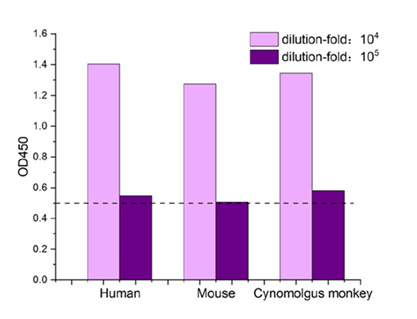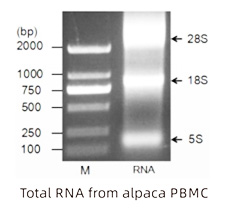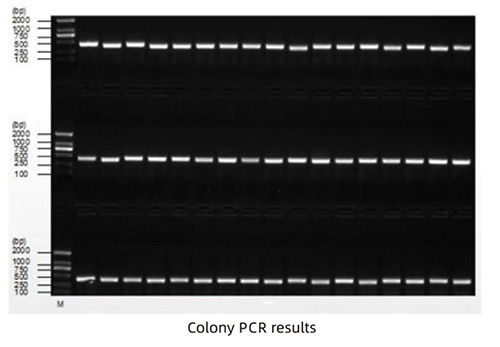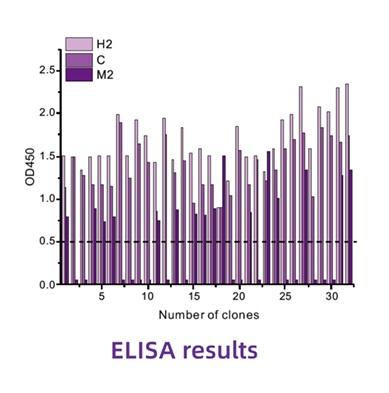Screening for nanobodies that can cross-react with human, cynomolgus and mouse antigens. Analyze the sequence and structure of the antigen, and determine the co-immunization scheme of human antigen and mouse antigen.
| Service | Deliverables | Time |
|---|---|---|
| Time | Dose | Injection Sites(subcutaneous) |
| Day 1 | Antigen Preparation | |
| Day 2 | 1st 500 μg H1, collect blood before immunization | Near neck lymph nodes |
| Day 15 | 2nd 250 μg H1 + 250 μg M1" | Near neck lymph nodes |
| Day 29 | 3rd 250 μg H1 + 250 μg M1 | Near neck lymph nodes |
| Day 36 | Sera antibody titer test | |
| Day 43 | 4th 250 μg H1 + 250 μg M1 | Near neck lymph nodes |
| Day 50 | Collect 50 mL blood, isolate PBMc,put it into trizol and store at - 80°c.Perform the serum titer test |
01-Results
After 4 times of immunization,the titers of serum anti-human,cynomolgus monkey and mouse antigens all exceeded104, and the titers of serum anti-human and cynomolgus monkey antigens both reached105,indicating strong cross-species responses were produced.

02-VHH Phage Library
Total RNA was extracted from PBMCs isolated from 50ml of peripheral blood, and the electrophoresis of RNA sample was run to make sure of good quality mRNA.

The RNA was reverse transcribed into cDNA, and after two rounds of PCR amplification, Diverse VHH sequences were obtained for following ligation.

The VHH DNA sequences were ligated to the phagemid, and finally transformed into Escherichia coli competent cells to obtain a bacterial VHH library. After the helper phage infection and induction, the VHH phage library was obtained. The positive rate of cloning is 100% after single-colony PCR and there is no repetitive sequences among 51 positive clones after sequencing analysis. Phage library capacity>10.

03 -VHH Selection
Screening Process: Human (H2)and mouse antigen (M2) with different labels,and monkey antigen (C) were used for three rounds of biopanning, respectively.BSA was used as a control to detect the enrichment. Afterwards, single clones were randomly picked for Elisa analysis toverify the cross-reactivity with the three antigens.92 positive clones were sent for sequence analysis. Among 92 VHH sequences, 28 nanobodies with different amino acid sequences of CDR1, CDR2 orCDR3 were obtained.

04-Expression and Verification
10 nanobodies selected for their crossreaction with human, mouse, and cynomolgus antigens for expression and purification , and 5.5 mg of each purified VHH protein was obtained for Elisa analysis. The VHH with the highest affinity was selected to test thekinetic data (Octet).
